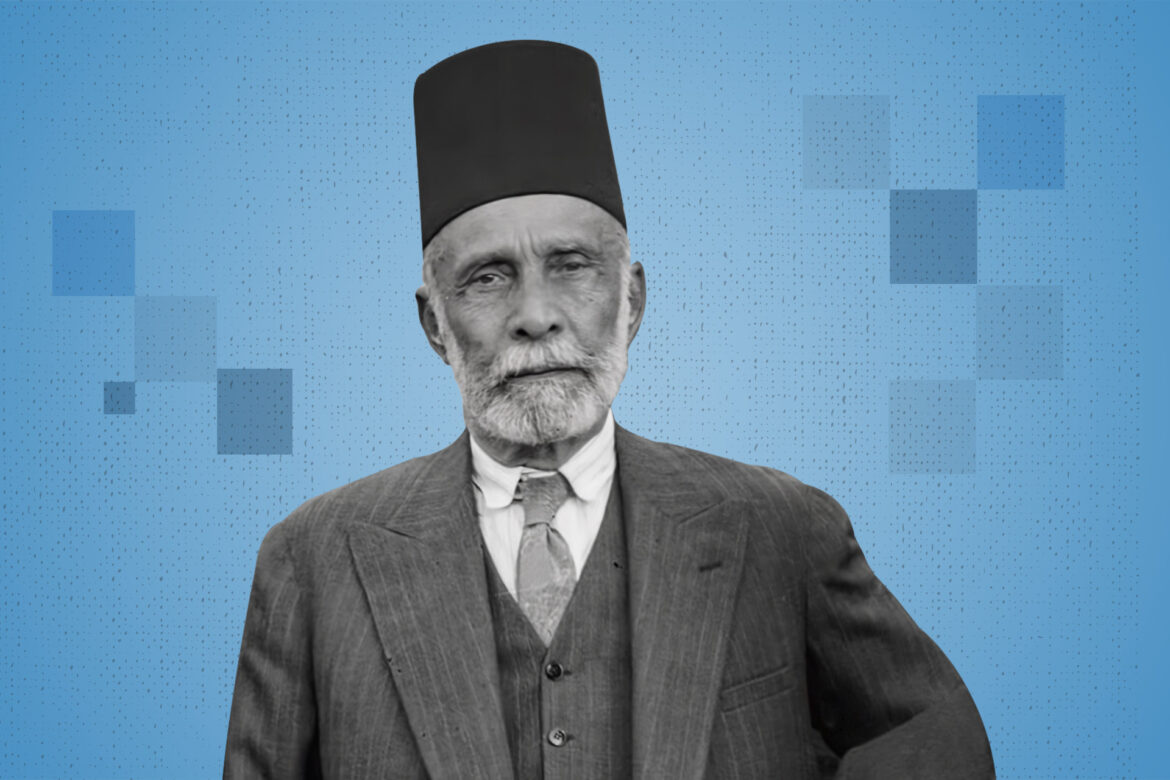Musa Kazem Al-Husseini (1853-1934) was one of the prominent figures in the Palestinian cause in the first half of the twentieth century, a Palestinian Jerusalemite politician, and head of the Arab Executive Committee in the Third Arab Conference in 1920. He died in Jaffa on March 26, 1934, and was buried in the Iron Gate to the west. The Holy Mosque.
Birth and upbringing
Musa Kazem Al-Husseini was born in Jerusalem in 1853. He belongs to a prominent Palestinian Jerusalemite family. His father, Salim Al-Husseini, and his brother, Hussein Al-Husseini, served as mayor of Jerusalem.
Musa Kazem Al-Husseini married Ruqaya Al-Husseini, who headed the Palestinian Arab Women’s Conference in 1929, and they had three children, Fouad, Farid, and Abdul Qader.
His son, Abdul Qader al-Husseini, is the hero of the Battle of Qastal, and the leader of the Holy Jihad Battalion that defended Jerusalem during the Nakba War in 1948.
Study and training
Musa Kazem Al-Husseini received his initial education in Jerusalem, then moved to Istanbul and studied at the “Sultan’s Office”, which prepared its students to fill important positions in the Ottoman Empire and appointed its graduates as governors in the districts (qaimqam).
Jobs and responsibilities
He began his career in 1880 as a paperworks officer (Bashkatib) in the medical health department, then he was appointed mayor in 1881. He moved from Jaffa to Safad Faharim (in the province of Aleppo), then to Akka and Ajloun.
In 1896, he was promoted to the position of Mutasrif, and worked as Mutafir in Asir, Najd, and Saud (in the Arabian Peninsula), and in Bitlis and Arjmidan (in Anatolia), then in Hauran (in Syria) and Al-Muntafiq (in Iraq), then he returned to work in Syria, where the Ottoman authorities imitated him. At the end of the 19th century, he received the rank of Pasha.
He was retired in late 1913, so he returned to Jerusalem and stayed at home during the years of World War I.
In 1918, after the British occupation, he assumed the presidency of the municipality of Jerusalem, succeeding his brother Hussein Salim. During his presidency, he refused to introduce Hebrew as an official language in the municipality.
Political experience
The Third Palestinian Arab Conference, which was held in Haifa on December 13, 1920 – after the fall of King Faisal’s government in Damascus – elected Musa Kazem Al-Husseini as its president and head of the Arab Executive Committee, which he continued to head until his death.
Under its chairmanship, the conference declared the “invalidity of the Balfour Declaration,” its cancellation, and the prohibition of Jewish immigration. It demanded the establishment of a national government accountable to a council (parliament) whose members would be elected by the people of Palestine. It called for the unification of the State of Palestine with its Arab sisters.
Following the Jaffa Revolution, which broke out in 1921 and spread throughout all of Palestine, the Fourth Arab Conference was held in Jerusalem on June 25, 1921, in which it was decided to send a delegation to Britain, headed by Musa Kazem Al-Husseini, to present the issue to British public opinion.
After extensive communications by the delegation, the House of Lords refused on June 20, 1922, to approve the Mandate for Palestine, but the House of Commons took the opposite decision on July 4, 1922, in which it supported the British government’s policy based on establishing a “Jewish national homeland” in Palestine.
Musa Kazem Al-Husseini was called the “venerable father” of the Palestinian National Movement throughout the years he spent as Chairman of the Arab Executive Committee, during which he headed all the delegations that went to London to persuade its government to abandon the Balfour Declaration policy.
On October 13 and 27, 1933, he stood at the head of the two massive demonstrations that broke out in Jerusalem, then in Jaffa, to denounce the policy of the British Mandate and to demand an end to Jewish immigration and to prevent the transfer of Arab lands into Jewish hands.
His martyrdom
Musa Kazem went out in the demonstration, which was confronted by the occupation soldiers with all violence and brutality. They attacked the octogenarian sheikh with their clubs and the butts of their rifles until they knocked him to the ground, and his status and age did not help him.
He returned to his home wounded and suffering from severe injuries, and he only stayed for four months after that, after which he died a martyr on March 26, 1934, and all of Palestine came out to bid him farewell, and he was buried in the Khatuniya School in Bab Al-Hadid, west of the Temple Mount, next to Al-Aqsa Mosque.



